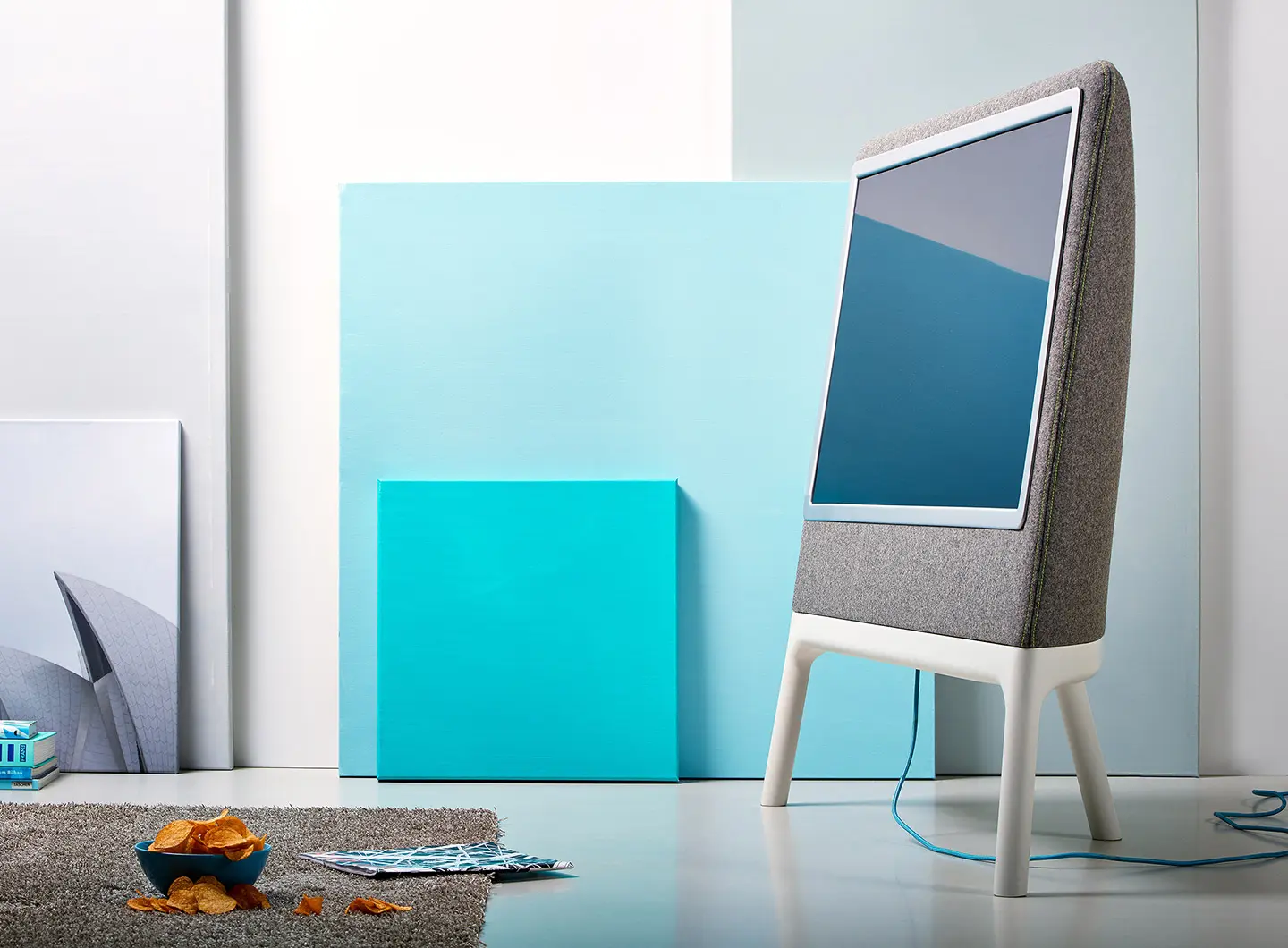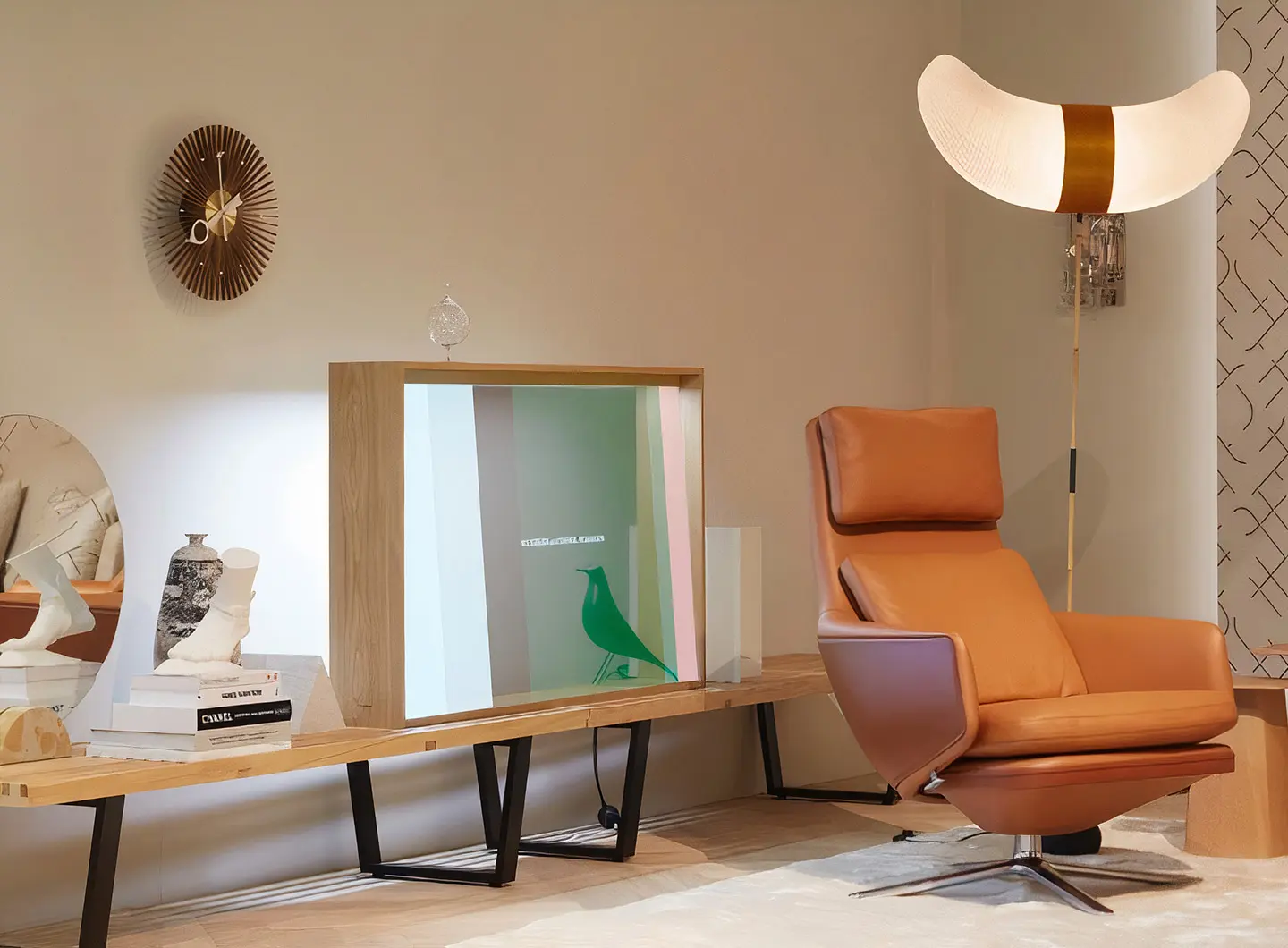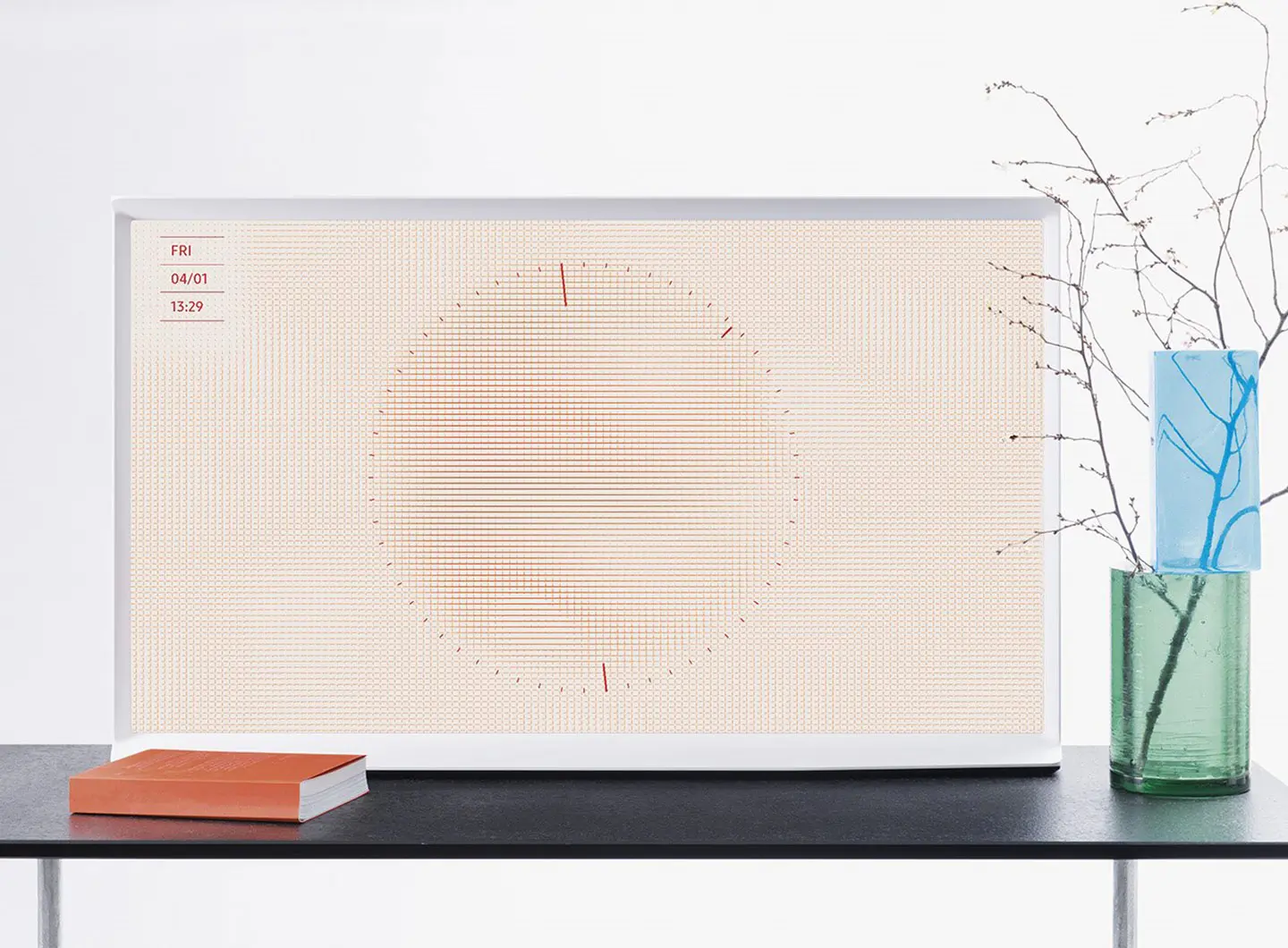Pure volumes, minimal or non-existent decoration, primacy of functionality, harnessing new materials: from the Casa del Fascio in Como to the railway station in Florence, the story of an experimental period that, after almost a century and several attempts at damnatio memoriae, remains a tangible presence in Italy.
Designer TVs

LG Signature OLED TV ©LG Electronics
No longer just black boxes, but furnishing accessories, pictures and even see-through and invisible objects. The latest generation televisions reflect our new lifestyles and thirst for excitement.
Unlike other technological products whose design has changed rapidly over the years (telephones, for example), televisions have remained pretty much the same for decades. Most of these devices, be they chunky or slimline, are still large – increasingly large – black rectangles. While the average television sold in America in 2020 measured 52 inches, these particular objects often still fail to blend in with our home decor.
While, on one hand, the number of television channels on offer has shot up exponentially in terms of both quantity and diversity, this has not been matched by progress in the design field. Once the technological hubs around which families gathered in the evening during the second half of the last century, they are now being outstripped by the great rival media, losing their centrality but gaining a new look, one that is increasingly integrated into the new domestic landscape.

The Frame, design by Yves Béhar
The Orion 23 by Franco Albini and Franca Helg, produced by Brionvega in 1961, was an early example of television design. The screen was supported on a slender metal base, creating a suspended viewing effect, in complete contrast to the monolithic gravitas of the models then on the market. Televisions had never been the subject of stylistic research before then.
Marco Zanuso and Richard Sapper were also ahead of the game with Doney 14, designed in 1962, again for Brionvega. It was the first portable transistor television to be made in Europe, netting a Compasso d’Oro award, and was followed in 1964 by the Lilliputian Algol 11. Both genuinely revolutionary given their extra small size and sloping, rounded screens, and equipped with an easy carrying handle and colourful ABS housing. The Black ST201 came along in 1969, nicknamed the Cube because of its compact volumetry, while its transparent, reflective black case turned it into a furnishing piece. These televisions sets were among the first to turn the transitional aesthetic and functional canons on their heads, promoting the domestic integration of the devices, elevating them instead to luminous objects of desire. They marked a first step in the evolution of televisions, a natural response to the then contemporary interiors and demands, which were bolder and less rigid than in the past.
The Dutch designer Robert Bronwasser’s Homedia TV of 2013, a design statement that captured the frenzy of innovation surrounding televisions, was a response to his reflection “Why are the products that dominate the domestic environment so often uniform and soulless?” The answer to that is a television that becomes a piece of home decoration in its own right, attracting attention even when off. First of all, its shape is reminiscent of the old blackboards on easels, i.e. a freestanding object made up of a covered three-legged die cast aluminium structure and a screen framed by a strip of Kvadrat fabric, which becomes a rounded casing at the rear, housing all the technology.

Homedia TV, design by Robert Bronwasser - Photo Thomas Van Schaik
Vitrine by Daniel Rybakken and Panasonic Design Kyoto in collaboration with Vitra, showcased on their stand at the Salone del Mobile.Milano 2019, is an altogether different concept. Rybakken described it thus: “The model carefully balances between art and design. As a screen it no longer dictates its placement nor its role in the living space, The dominating large black surface is instead transformed into something that can highlight what’s behind, what’s displayed, or nothing at all!” The TV is wood-framed with a panel of gently sloping transparent glass that can serve as a background for objects placed behind it – like a showcase. The television mode only comes to light when the set is turned on, revealing the OLED display, while the electronic components are concealed within the housing and are therefore invisible. The power cable alone protrudes from one side. Without a front or a back, this transparent TV fits into every corner of the home.

Vitrine, design by Daniel Rybakken and Panasonic Design Kyoto
Ronan & Erwan Bouroullec’s Serif TV for Samsung is inspired by the original, revolutionary 2015 model. Serif 2.0 is more accessible by being more affordable, and comes in larger screen sizes – 43, 49 and 44 inches. Enlarging the screens has made for even lighter and more elegant solutions. The profile, which is narrower on all four sides, forms a typical serif capital “I” shape, after which the television is named, and new colours will soon be added to the white and dark blue of the first version. The back is also testament to the magic of design, with the cables neatly tidied away beneath the (removable) fabric cover. It can be positioned directly on the floor or on a flat surface, or the optional legs can be attached to bring it up to a certain height, while Samsung’s state-of-the-art QLED screens make for top quality viewing. The available functions include Ambient Mode, which allows the screen to be used as a mood setter, becoming at one with the surrounding space by displaying photos and various sorts of patterns – the latest Serif models also have the option of a clock or works of art.

Serif 2.0, design by Ronan & Erwan Bouroullec ©Studio Bouroullec
Again by Samsung and again a cross between a device and a furnishing piece,The Frame came out in 2017, accompanying the official launch of the Korean giant’s new premium QLED range. Designed by the Swiss designer Yves Béhar, it hangs like a picture but can also be positioned on a shelf like a frame or mounted on an easel like an artist’s canvas. When it’s switched off, it functions in “art” mode, with a choice of 100 artworks, which can be integrated with one’s own photographs and archive pieces from leading galleries and museums. It can be further customised with interchangeable frames in different colours and finishes. Activated by a single remote control with digital and voice commands, light and movement sensors send it into “art” mode (stand-by) once it no longer detects any human presence close by. It is a decidedly multi-functional TV, and undoubtedly the forefather of the next generation of televisions. Objects to rival Harry Potter’s cloak of invisibility. Objects that fade into the background when not required, allowing the room and the internal or panoramic views to claim the limelight, an increasing requisite in a certain type of home.













